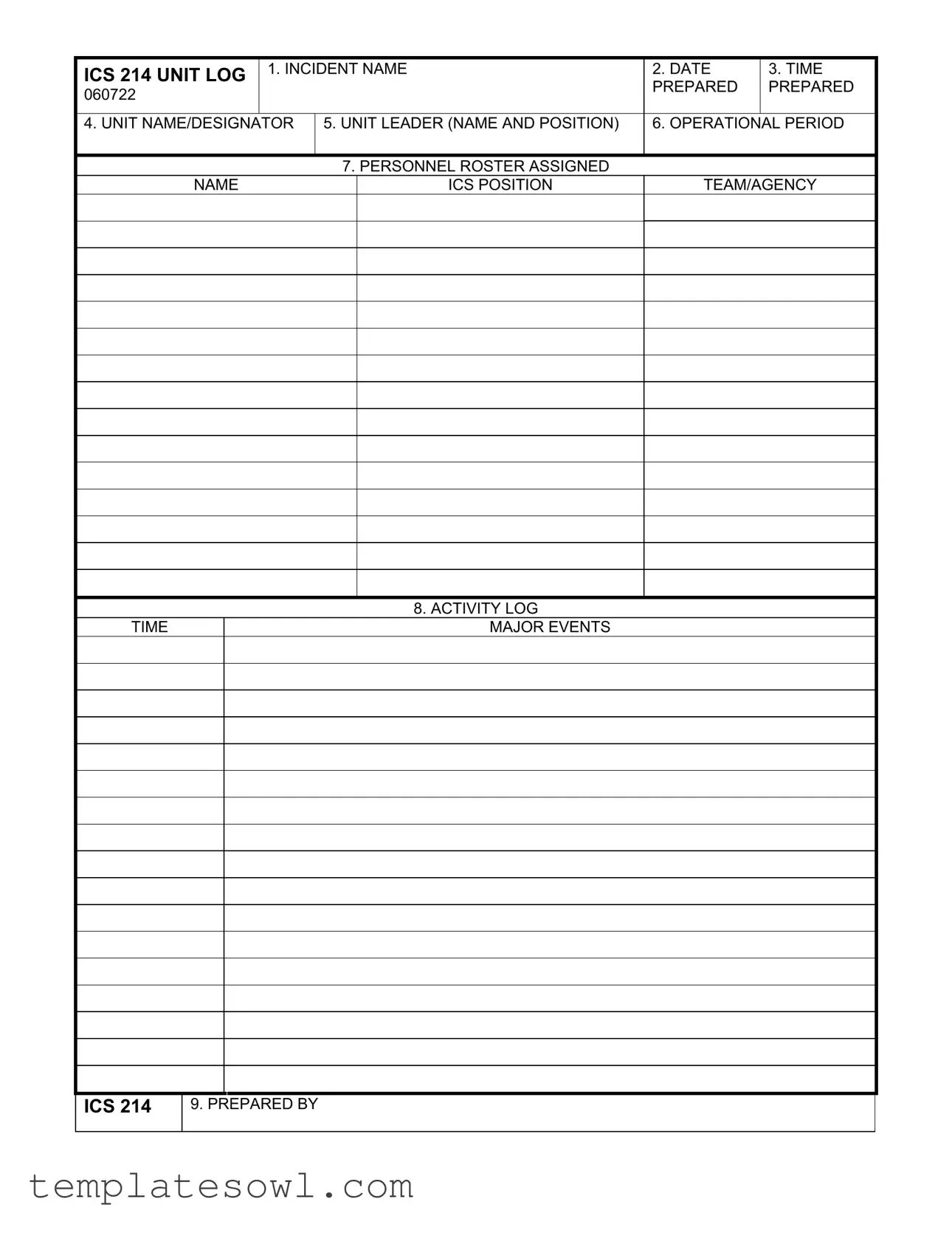What is the purpose of the ICS 214 Unit Log form?
The ICS 214 Unit Log form serves to document all significant operational details during a disaster response. It allows team leaders and members to track major events, decisions, and milestones throughout their operational period. This log not only facilitates communication among team members but also contributes to orderly documentation for post-incident analysis and accountability.
Who is required to fill out the ICS 214 Unit Log form?
Every individual involved in the Emergency Operations Center (EOC) or field unit team, who has responsibilities related to disaster response, must complete the ICS 214 Unit Log. This includes team leaders as well as personnel undertaking various roles within the response efforts. Ensuring that all key operatives fill out the log can streamline information sharing and operational continuity.
When should the ICS 214 Unit Log be completed?
The log should be maintained continuously throughout the established operational period. Each operational period can vary in length, anywhere from one hour to twenty-four hours, and the log must be passed to the incoming Assignment Leader at the end of that period. This practice ensures that the incoming team is fully briefed on the ongoing situation and relevant developments.
What information needs to be included in the Personnel Roster section?
The Personnel Roster requires a comprehensive list of individuals assigned to the operating location. This includes their names, the positions they hold in the Incident Command System (ICS), and the agency or organization they represent. Keeping this roster updated is vital, especially for EOC operations, as it allows for swift communication and coordination among team members.
How should major events be recorded in the Activity Log?
In the Activity Log, major events must be recorded chronologically. This includes important milestones like reporting for duty or making decisions. Each entry should note the time of the event and include details such as promises made or information received. This thorough documentation ensures that team members on subsequent shifts are aware of prior decisions and actions, facilitating seamless operations.
What should be done with the ICS 214 Unit Log at the end of an incident?
At the conclusion of an incident, all ICS 214 Unit Logs should be submitted as part of the overall incident paperwork record. These logs are essential for providing a comprehensive overview of the operation, documenting lessons learned, and preparing reports that may inform future responses. Thus, retaining all completed logs is crucial for accountability and operational improvement.
What does the 'Prepared By' section entail?
The 'Prepared By' section must include the name and signature of the individual who authored the log. This provides a clear attribution of responsibility for the recorded information, which is vital for accountability. It also allows for easier follow-up if there are questions about specific entries in the log.


